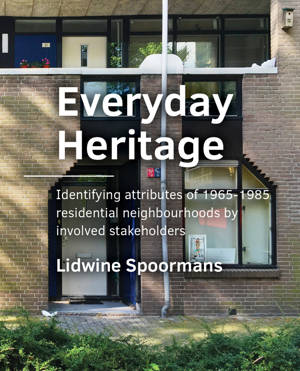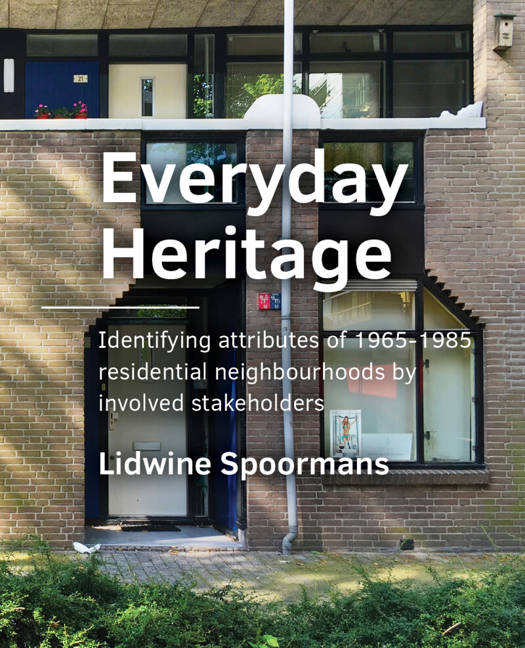
- Afhalen na 1 uur in een winkel met voorraad
- Gratis thuislevering in België vanaf € 30
- Ruim aanbod met 7 miljoen producten
- Afhalen na 1 uur in een winkel met voorraad
- Gratis thuislevering in België vanaf € 30
- Ruim aanbod met 7 miljoen producten
Zoeken
Everyday Heritage
Identifying attributes of 1965-1985 residential neighbourhoods by involved stakeholders
Lidwine Spoormans
€ 29,95
+ 59 punten
Omschrijving
In improving the sustainability of our built environment, European institutions emphasize the importance of protecting and advancing cultural values. As most of the stock is not listed, nor is its heritage significance assessed, future sustainable developments risk neglecting present attributes, causing the loss of resources and their significance. This problem applies to 1965-1985 Dutch housing, comprising over 30% of the stock, with no clarity on its heritage significance. This thesis aims to reveal significant attributes of residential neighbourhoods, built in The Netherlands between 1965-1985, as identified by involved stakeholders. A research framework integrating attributes, stakeholders and scales, is used to examine case studies in Almere Haven and Amsterdam Zuidoost. The identification of attributes results from open-ended questioning by multiple participatory methods. A process of inductive analysis, classifying and relating attributes revealed categories, chains, and networks of attributes, representing a shared neighbourhood narrative. Results show that attributes can be identified on successive scale levels in tangible and intangible categories. Participants convey significance to attributes originally intended and to attributes added or changed later, to attributes specific to 1965-1985 neighbourhoods and to more generic ones. Different stakeholder groups and individuals do not disagree in their assessments but focus on different attribute categories and scale levels. By combining a broad definition of heritage and participatory methods to identify attributes, this thesis bridges the gap between listed heritage and everyday neighbourhoods. Further developing and applying this approach can support the sustainable development of our built environment, informed by heritage significance, regardless of heritage status.
Specificaties
Betrokkenen
- Auteur(s):
- Uitgeverij:
Inhoud
- Aantal bladzijden:
- 282
- Taal:
- Engels
- Reeks:
Eigenschappen
- Productcode (EAN):
- 9789463667777
- Verschijningsdatum:
- 14/11/2023
- Uitvoering:
- Paperback
- Afmetingen:
- 191 mm x 235 mm
- Gewicht:
- 658 g

Alleen bij Standaard Boekhandel
+ 59 punten op je klantenkaart van Standaard Boekhandel
Beoordelingen
We publiceren alleen reviews die voldoen aan de voorwaarden voor reviews. Bekijk onze voorwaarden voor reviews.











